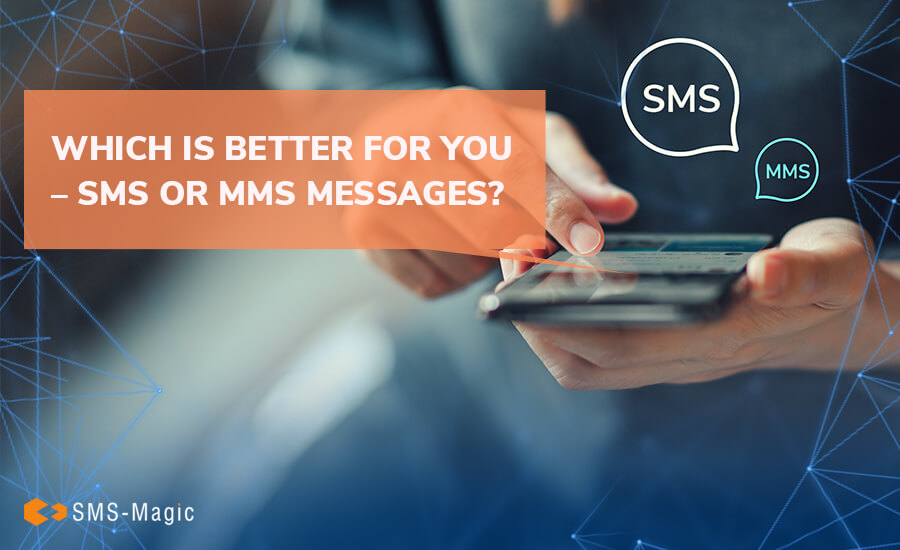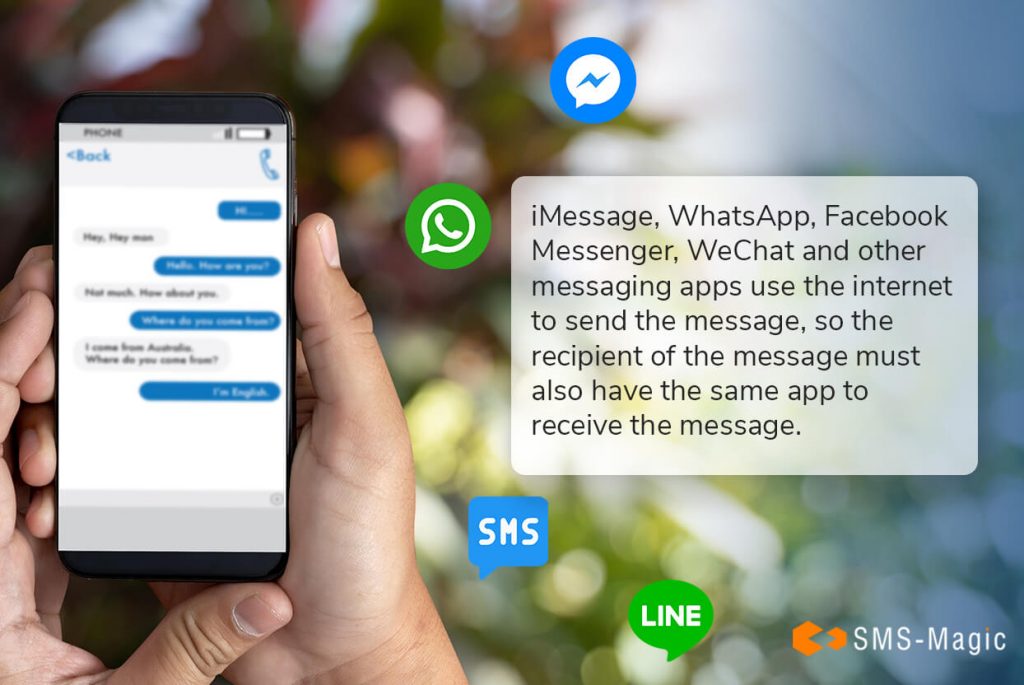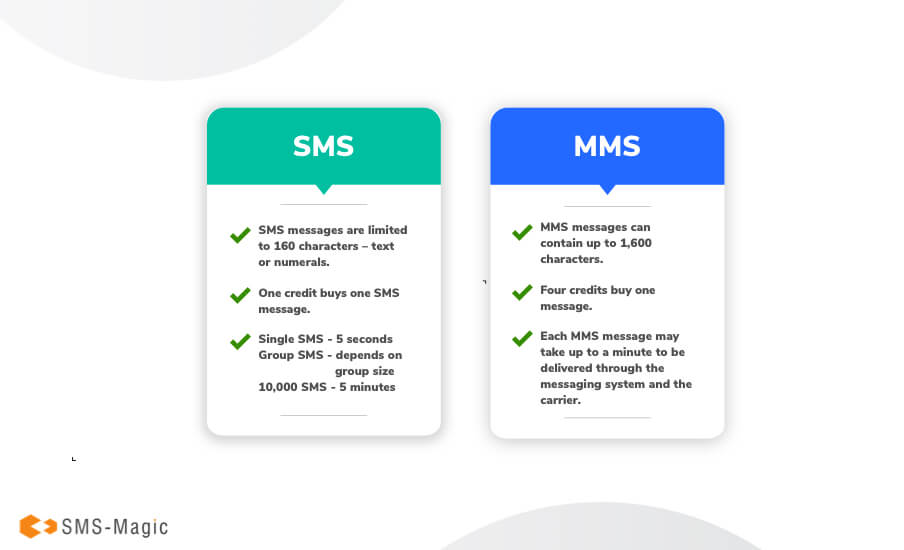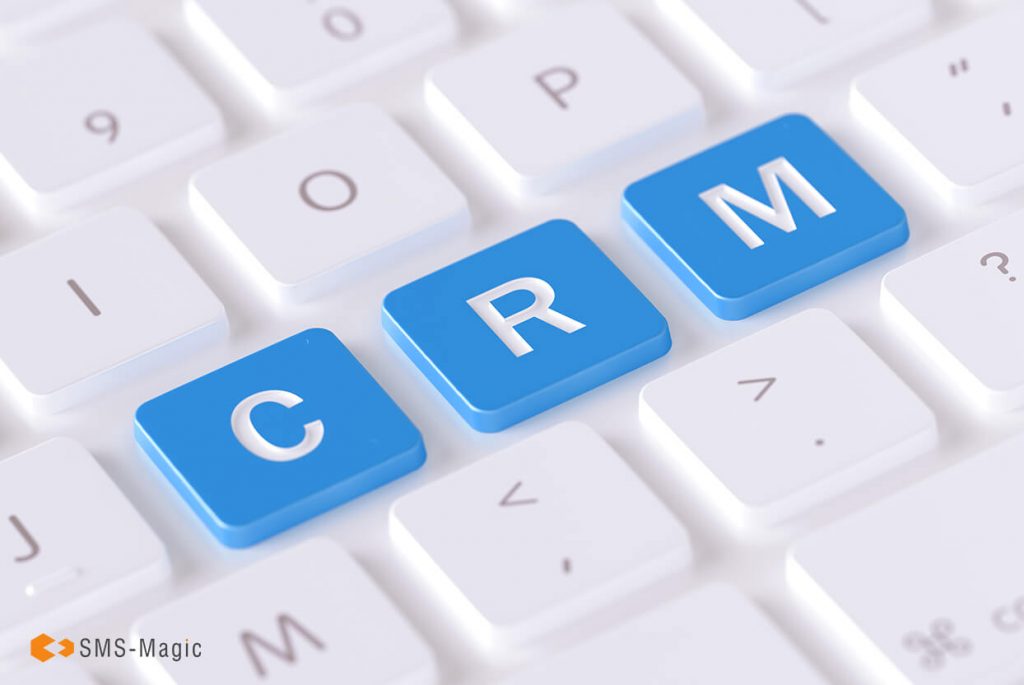
All it takes is 2 easy steps
If you're a winner, we will send you $100 Amazon gift card at Dreamforce!


You’re excited to start using text messaging in your business communications. You’ve connected your messaging service to your CRM. You’ve developed a distribution list or two. And your customers, clients, patients or applicants have opted into your text messaging program. Now, it’s time to decide what type of messages you’d like to send.
You probably already use SMS messaging in your daily life. SMS stands for “Short Message Service” and is the type of service that comes with most mobile phones. When you text a brief message to family members with a quick reminder about the day’s schedule, you’re probably using an SMS message. It’s no more than 160 letters and numbers and doesn’t have any attachments. The technology has been around since the 1980s and is the most widely used messaging protocol.
If, however, you send a photo with your message, you’re using an MMS message. MMS stands for “Multimedia Message Service.” You can include photos, videos, audio clips, GIFs and more in an MMS message. MMS also allows you to send up to 1,600 characters in your message. Combining a message and an attachment generally creates a much larger file than a simple SMS message, but more about that in a minute.
When you send or receive a plain SMS message, you’re using the cellular service on your mobile phone. If you’re using iMessage, WhatsApp, Facebook Messenger, WeChat or any of the other “Over the Top” apps, the app is using the internet to send the message, not a cellular service. The recipient of the message must also have the same app to receive the message.

For example, if you send an iMessage (which comes with your iPhone) your recipient must have an iPhone, too, or the message will be delivered as an SMS message. You can tell the difference because the bubble on your iPhone goes from blue to green when you message someone who doesn’t have an iPhone.
When you’re sending one message at a time, of course, it doesn’t matter much how it’s being delivered. When you start sending hundreds or thousands of messages at a time, however, the details become much more important.
At SMS-Magic, you have the capability to send either SMS or MMS messages from the minute you sign up for our service. If you have unlimited time and an unlimited budget, you can send MMS messages exclusively. If, however, you are tracking time spent and managing a budget, you’ll need to know when to choose one or the other.
If you’re running a “text-to-join” campaign or something similar and expect a high rate of return, you probably will opt for SMS. Transactional messages like appointment confirmations, package tracking or password resets probably make more sense as SMS messages, too. Consider SMS when your messages are short, urgent, or concise or direct recipients to links with more information. Be careful with emojis because sometimes they can bump your messages into an MMS category.

Although budget may limit your choice to less-expensive SMS messages, you might have occasions when an MMS campaign will attract more attention. Humans remember pictures better than other information. If you hear something, you’ll remember 10 percent of it three days later. But if there’s a picture, you’ll remember 65 percent of it.
In 2008, BMW launched an MMS campaign to sell snow tires and enjoyed an outstanding 30 percent conversion rate. The campaign cost them $60,000. If they sent to 117,000 customers and 30 percent bought tires at an average cost of $1,300, the campaign brought in more than $45 million. That’s over $750 in revenue per dollar spent on the campaign.
Of course, not every company will experience that kind of result, but you may have campaigns that warrant higher send rates than others. In a 2012 study by ROI Research, 44 percent of respondents say they are more likely to engage with companies that post pictures in their ads. Your audience’s preferences will help guide what types of messages you send.
Do you have staff members who are experts at managing relationships with all the carriers you might encounter? Don’t worry! SMS-Magic does.
As part of our service, we handle everything you need from a carrier – from acquiring short and long codes to troubleshooting issues. We work with carriers every day and can save you the trouble of dealing with them.

In addition, SMS-Magic works seamlessly with Salesforce and Zoho and has the capability to work with most CRM systems. We can help you even if you don’t use a CRM at all.
Does SMS-Magic sound like the partner you’ve been looking for? We hope so!
Contact us to set up a demo or to start your free trial. Let us show you how to accelerate your messaging campaigns with SMS-Magic!
CATEGORIES: SMS Messaging, Multichannel Messaging, SMS/Text Marketing
Stay updated on business text messaging
Text MAGIC for Demo to
USA: 36343
AUS: (61)409564682
UK & ROW: +44 7860017509
Email: care@sms-magic.com